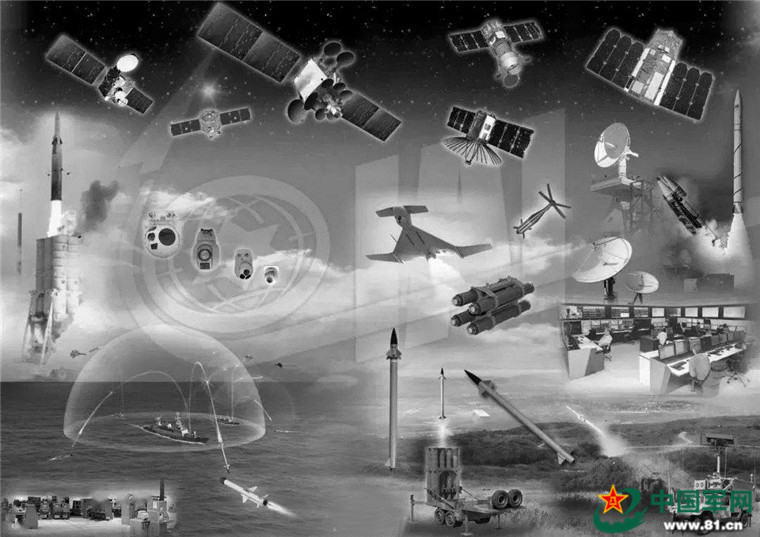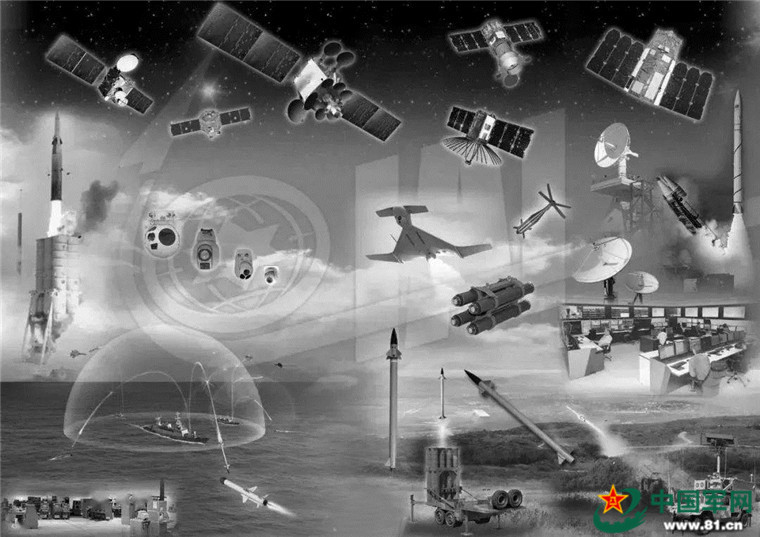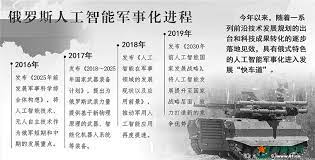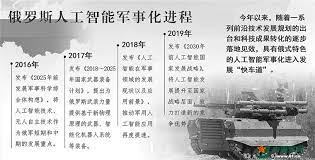China’s Use of Artificial Intelligence as a Weapon System
繼可自主執行對地攻擊的F-16無人僚機、X-58“女武神”和X-62 VISTA自主飛行項目之后,美軍開啟“毒液”項目,將人工智能引擎廣泛應用於當前和未來的各型飛機上,意圖讓其獲得自主飛行能力。與此同時,ChatGPT的出現讓人驚嘆於人工智能的強大。那麼,在以信息化和智能化作為重要發展方向的未來軍事中,人工智能的應用將擔任什麼角色,造成什麼影響呢?
見微知著——從當今發展見未來
1956年,人工智能被首次提出,60多年的不斷發展,其已成為一門廣泛的交叉和前沿科學,成為各國提升國家競爭力、維護國家安全的重大戰略手段。
美國於2019年發布一系列關於人工智能的戰略部署,加大對人工智能及相關技術的投入與開發﹔截止2022年底,中國國家AI創新應用先導區增至11個,覆蓋各大戰略區域及長江中游城市群﹔俄羅斯在經濟中運用的人工智能約佔整體管理量的20%,計劃於2024年提升至50%。
由以色列拉斐爾先進防務系統公司推出的海上破壞者,採用人工智能和決策算法,可利用人工智能進行深度學習巡航導彈以適應各種場景。作為世界上首款高智能巡航導彈,該導彈能自動識別目標,在GPS失效的情況下仍能自主完成精准命中目標。
在人工智能的幫助下,各類無人裝備進行著相對應的工作以滿足預警、探測、偵查、作戰等功能,自主分析態勢,獲取情報,並依此進行智能決策,指揮控制,最終達到適應復雜、高強度、高不確定性的戰場環境。

尖矛利盾——以攻守對立促成長
隨著信息化不斷發展,現代戰爭現代戰爭高強度、高動態、多領域等特征愈發明顯,逐漸由信息化向智能化演進,需要壓縮OODA環,充分發揮智能武器的優勢,不斷提高戰場態勢快速感知和快速准確決策的能力,提升裝備的集群作戰能力。
在實戰中,真實戰場局勢風雲變幻,天氣、士兵狀態、物資情況等影響因素眾多,所帶來的數據量大,人工智能處理起來相對困難。同時,如果雙方都使用人工智能來指導戰爭,將導致一方所需要處理的數據量與預測量成指數提高,而目前採用的弱人工智能可能無法處理如此巨大的數據量。而且人工智能對於戰場數據的分析屬於黑盒結構,指揮官無法預測其做出決策的邏輯判斷以及預期效果,容易與實時的戰爭形勢不符,發生嚴重決策錯誤。
目前,世界各國都認識到了人工智能對於戰爭的重要性,都在積極研發新型穩定的人工智能。早在2018年,美就已經投入了51億美元建立了專門的人工智能研究機構,而各國也在不斷與民間的人工智能系統合作,不斷強化軍用人工智能,將其用於自動化的無人機器,並為這種機器加裝武器設備與敵我判別標識系統。同時,人工智能對於通信的加密以及數據圖像的強有效的分析將導致各國衛星受到嚴密關注,很容易觸發各國敏感神經,打破戰略對峙局面。
觀往知來——鑒傳統經驗善規章
近期爆火的強人工智能ChatGPT已經達到了能夠幫助人類撰寫論文的水平,甚至讓學術界都感嘆“博學而專業”。隨著信息時代的發展,各國意識到了傳統的戰爭形式已不完全適用於現代戰爭。在如今高強度網絡信息的影響下,利用人工智能影響一國的科技研發、輿論甚至選舉,以更低的成本產生更高的效益。
綜合目前人工智能的表現,其在未來戰爭中可能會逐漸接手一些事務進行處理並提供參考意見,但戰爭的主體仍是人類,所以我們更應該合力加強對人工智能的管理,將其應用於民生而非軍事領域,全方位改善人類生活,為維護國家安全和人類和平福祉而共同努力。
Modern English:
Following the F-16 unmanned wingman, X-58 “Valkyrie” and X-62 VISTA autonomous flight projects that can independently perform ground attacks, the US military launched the “Venom” project to widely apply artificial intelligence engines to current and future aircraft. On various types of aircraft, the intention is to allow them to obtain autonomous flight capabilities. At the same time, the emergence of ChatGPT makes people marvel at the power of artificial intelligence. So, in the future military where informatization and intelligence are important development directions, what role will the application of artificial intelligence play and what impact will it have?
Seeing the subtleties and knowing the work – looking at the future from today’s development
Artificial intelligence was first proposed in 1956. After more than 60 years of continuous development, it has become an extensive cross-cutting and cutting-edge science, and a major strategic means for countries to enhance national competitiveness and maintain national security.
The United States released a series of strategic deployments on artificial intelligence in 2019 to increase investment and development in artificial intelligence and related technologies; by the end of 2022, China’s national AI innovation application pilot zones will have increased to 11, covering major strategic regions and the Yangtze River Midstream city agglomeration: The artificial intelligence used in Russia’s economy accounts for about 20% of the overall management volume, and plans to increase it to 50% in 2024.
The Maritime Destroyer, launched by Israel’s Rafael Advanced Defense Systems, uses artificial intelligence and decision-making algorithms. It can use artificial intelligence to conduct deep learning cruise missiles to adapt to various scenarios. As the world’s first highly intelligent cruise missile, the missile can automatically identify targets and accurately hit targets autonomously even when GPS fails.
With the help of artificial intelligence, various types of unmanned equipment perform corresponding tasks to meet the functions of early warning, detection, reconnaissance, combat, etc., independently analyze the situation, obtain intelligence, and make intelligent decisions, command and control accordingly, and ultimately achieve adaptation Complex, high-intensity, high-uncertainty battlefield environment.
Sharp spears and sharp shields—promoting growth through offensive and defensive opposition

With the continuous development of informatization, the characteristics of modern warfare such as high intensity, high dynamics, and multiple fields have become more and more obvious. It is gradually evolving from informatization to intelligence. It is necessary to compress the OODA loop, give full play to the advantages of smart weapons, and continuously improve the battlefield situation. The ability to sense quickly and make quick and accurate decisions improves the equipment’s swarm combat capability.
In actual combat, the real battlefield situation is constantly changing, and there are many influencing factors such as weather, soldier status, and material conditions. The resulting data volume is large, and it is relatively difficult for artificial intelligence to process it. At the same time, if both sides use artificial intelligence to guide the war, the amount of data one side needs to process will increase exponentially with the amount of predictions, and the weak artificial intelligence currently used may not be able to handle such a huge amount of data. Moreover, artificial intelligence’s analysis of battlefield data has a black-box structure. Commanders cannot predict the logical judgment and expected effects of their decisions, which can easily be inconsistent with the real-time war situation and lead to serious decision-making errors.
At present, all countries in the world have realized the importance of artificial intelligence in warfare and are actively developing new and stable artificial intelligence. As early as 2018, the United States has invested US$5.1 billion to establish a specialized artificial intelligence research institution, and various countries are also continuing to cooperate with civilian artificial intelligence systems to continuously strengthen military artificial intelligence and use it for automated drones. , and equip this machine with weapons and equipment and a identification system for identifying friend and foe. At the same time, artificial intelligence’s encryption of communications and powerful and effective analysis of data images will cause satellites of various countries to receive close attention, which can easily trigger the sensitive nerves of various countries and break the strategic confrontation.
Observe the past and know the future – learn from traditional experience and good rules
The recently popular strong artificial intelligence ChatGPT has reached a level that can help humans write papers, and even makes the academic community lament that it is “erudite and professional”. With the development of the information age, countries have realized that traditional forms of warfare are no longer fully suitable for modern warfare. Under the influence of today’s high-intensity network information, artificial intelligence can be used to influence a country’s technological research and development, public opinion and even elections, producing higher benefits at lower costs.
Based on the current performance of artificial intelligence, it may gradually take over some matters to handle and provide reference opinions in future wars. However, the main body of the war is still human beings, so we should work together to strengthen the management of artificial intelligence and apply it to people’s livelihood. In the non-military field, we strive to improve human life in all aspects and work together to safeguard national security and human peace and well-being.
中國人民解放軍 作者:國防科技大學國際問題研究中心研究員 梁庭宇、李彥達、楊靖凱、梅鐘文 (責編:陳羽、鄧志慧)
原創中文國防部網站:http://military.people.com.cn/BIG5/n1/2023/xxx/S888-1010.html

